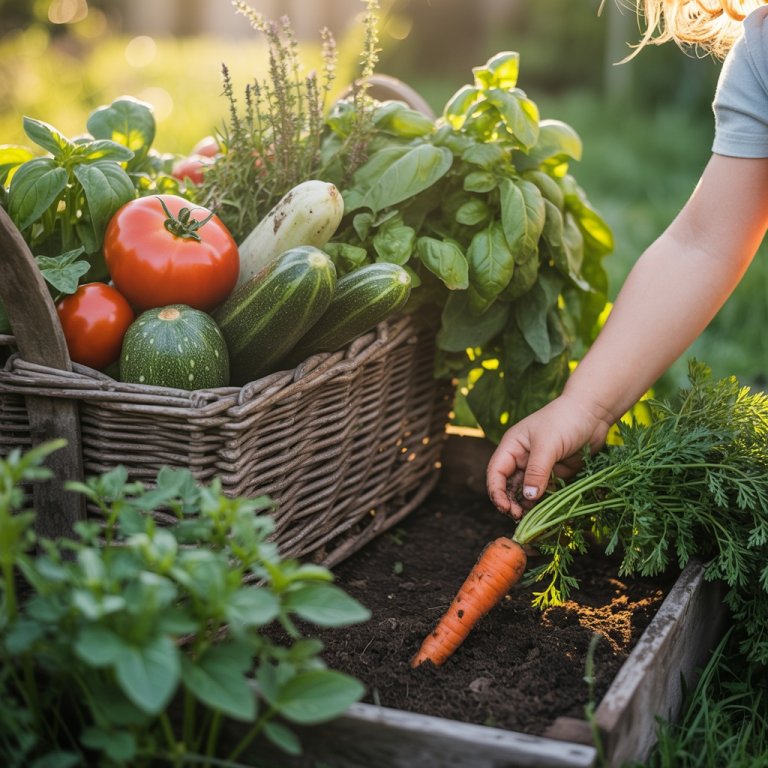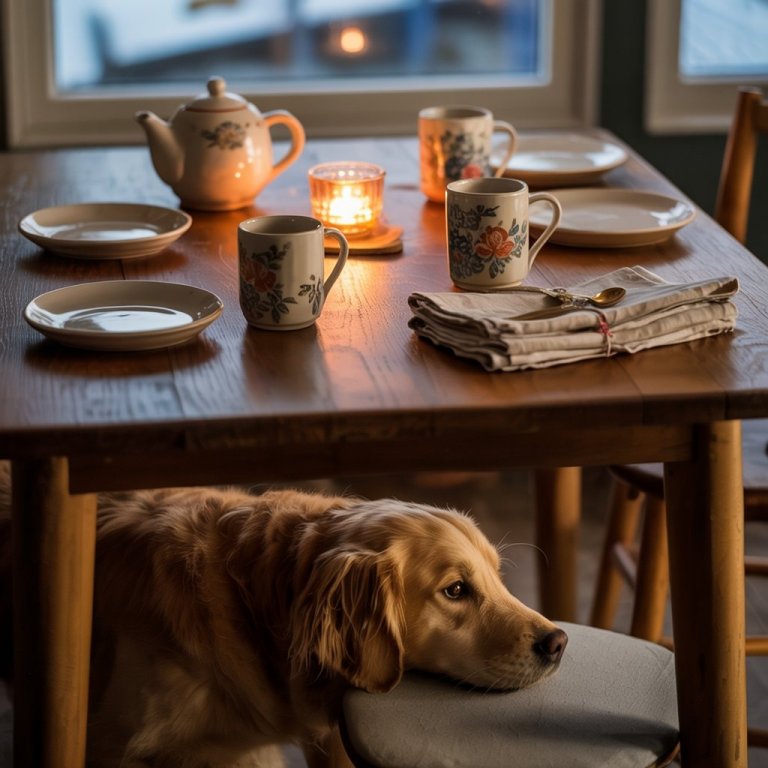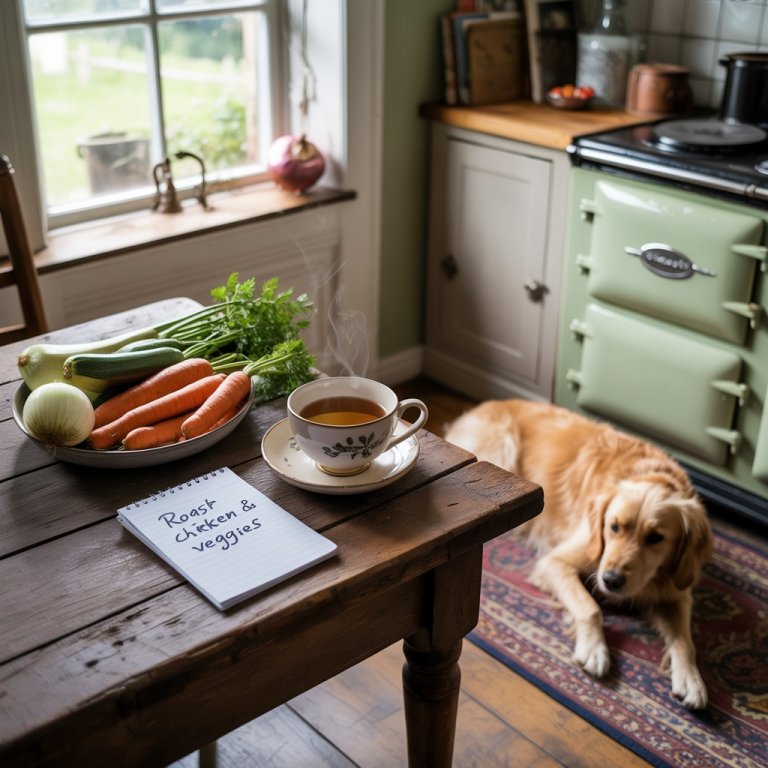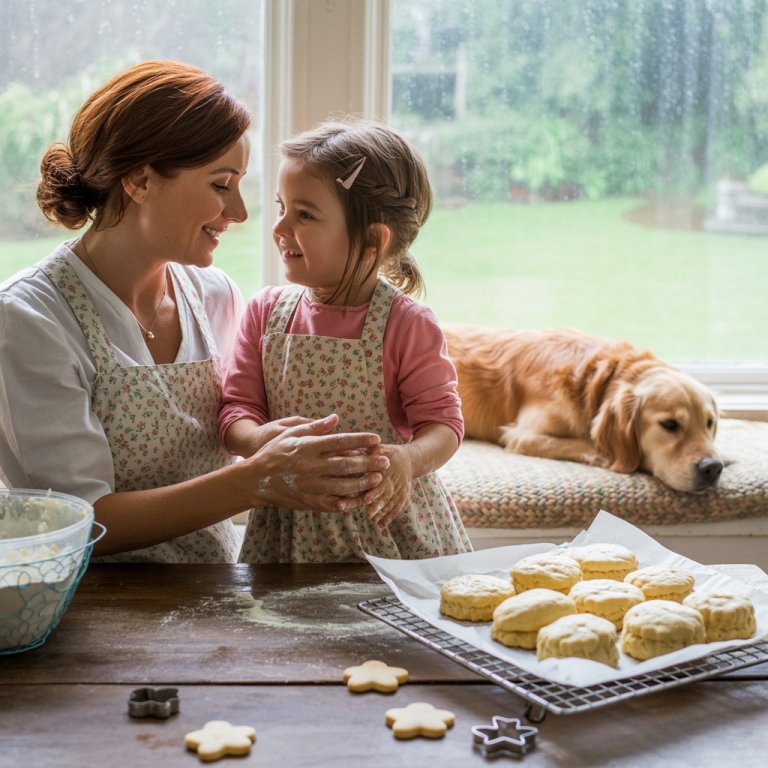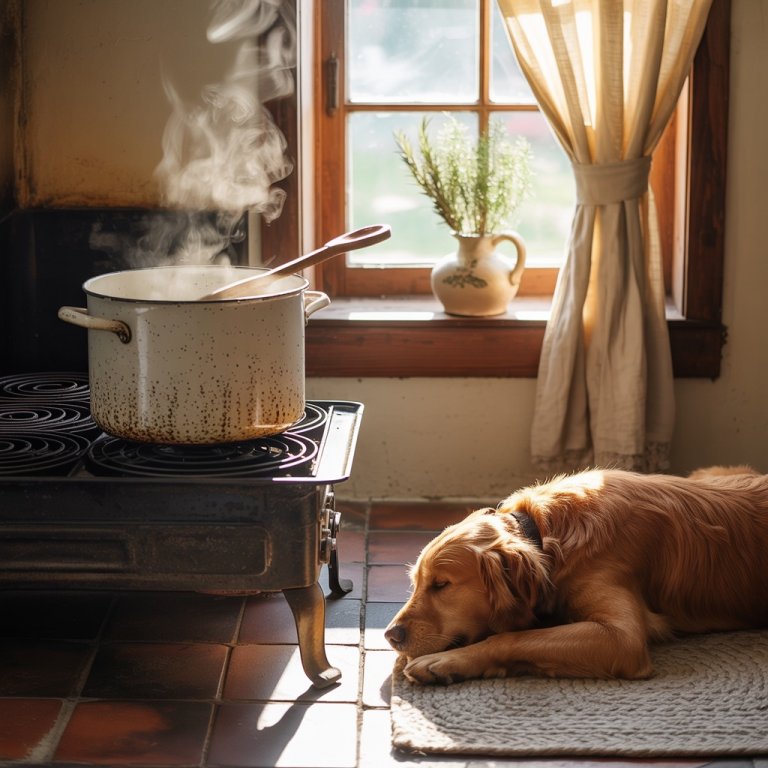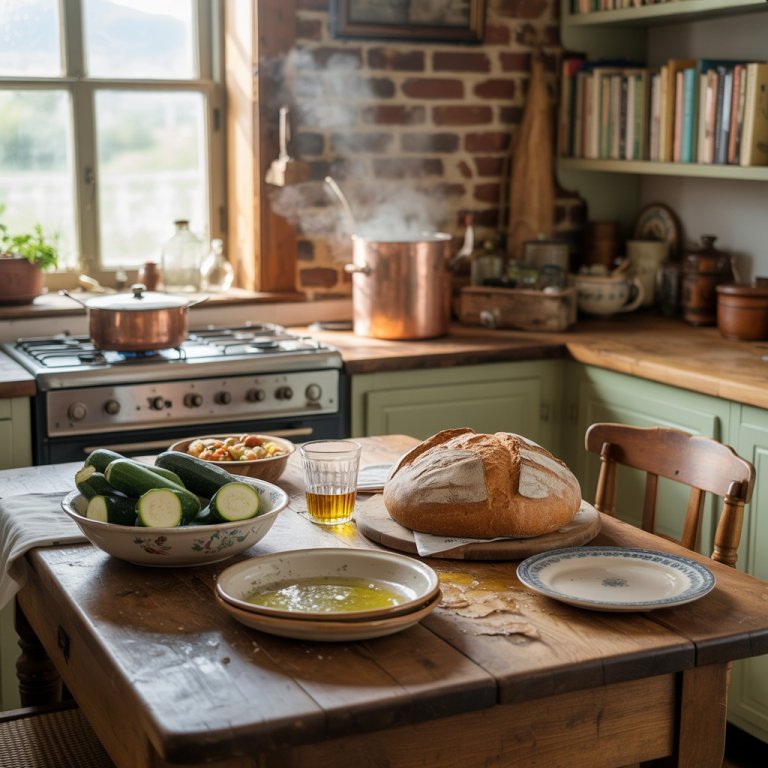What My Old Recipe Box Tells Me About Myself
Rediscovering the Little Tin Box
It had been tucked away in the back of the kitchen cupboard for years. A small, scratched metal recipe box with faded green sides and a lid that squeaked just enough to remind me it was old. I wasn’t looking for it, really. I’d been clearing out baking tins when I spotted it behind a stack of ramekins I rarely use.
I sat down right there on the floor with Maple curled at my feet and lifted the lid.
Inside, it smelled faintly of vanilla and pencil shavings. There were index cards curled at the edges, smudged with flour fingerprints and tiny grease marks that had seeped into the paper. Some were mine—written in my barely-there cursive when I was just starting to collect recipes. But many weren’t.
There were notes from my mum. One or two in my gran’s delicate, looping script. A couple even from old neighbours, written on torn notepad paper or the back of envelopes. The kind of notes that only exist in kitchens where recipes are shared by hand, not links.
And as I flipped through that little box, I realised I wasn’t just looking at meals—I was looking at a quiet map of my life.
What These Notes Hold (Besides Recipes)
There was the biscuit recipe we made every Christmas, the card still dusted with cinnamon around the edges. I could almost hear my daughter, age four, proudly pressing her thumb into the dough to make jammy indents.
There was “Elaine’s Broccoli Bake,” in bright blue ink, the ‘i’s dotted with tiny hearts. Elaine lived next door when I first moved here, and she gave me that recipe the week after our son was born. “When you can’t face a roast but still want to feel like you’ve tried,” she said. I made it three times that month.
One card had no title—just a list of ingredients and vague instructions. But I knew what it was the second I saw it: my gran’s lentil soup. The one she made with ham bone and barley and always said would “put colour back in your cheeks.” Reading it made me ache in that soft, sweet way that memories do.
And then, tucked way in the back, I found a shopping list. No recipe, just random items—baking soda, lemons, chocolate chips, carrots, and a scribble that looked like “birthday hats?” I smiled. That was the week we tried to bake a cake shaped like a hedgehog for my son’s fifth birthday. It mostly looked like a blob, but he loved it anyway.
Each note was like a breadcrumb back to a moment I hadn’t realised I’d saved.
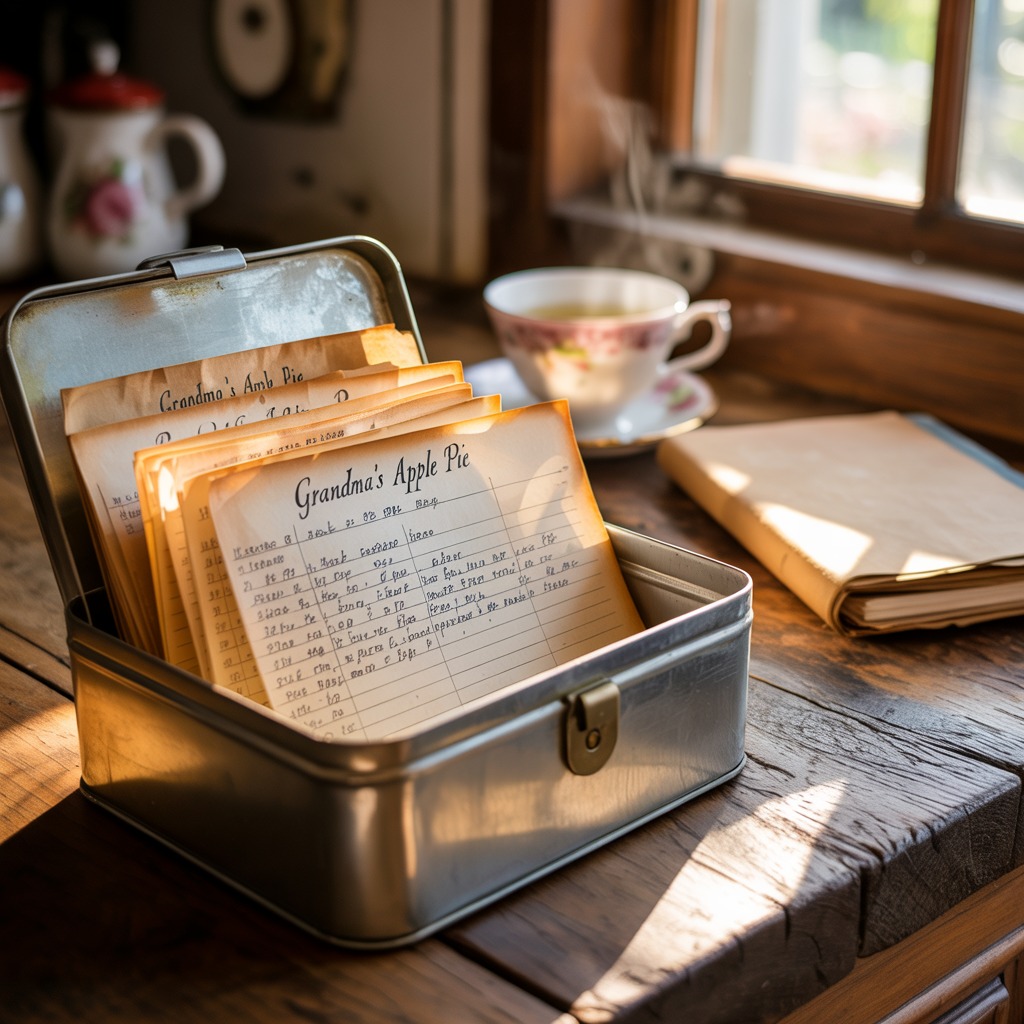
Why Handwriting Still Matters
These days, most of my recipes live on my laptop. Convenient, yes—but they don’t carry the same weight. They don’t have splatters of jam from when a toddler grabbed the card mid-stir. They don’t smell like spice cupboards or old wood. They don’t feel like someone passed them down with care.
Handwritten recipes are more than instructions. They are stories told in shorthand. A little wink from your past self that says, “This one worked. Keep it.”
Looking through that recipe box reminded me how much of my cooking life is tied to emotion—not just method. I’ve never written a recipe purely for flavour. It’s always been about something else: comfort, celebration, hope.
When I write a new recipe now, I still jot it down on paper first. Sometimes I’ll use one of the blank cards I keep near the cookbooks. I like knowing that maybe, one day, my kids will find them and feel something familiar.
The Messy Beauty of an Unsorted Life
One of the things I love most about that recipe box is how chaotic it is. Nothing is alphabetical. Some cards repeat the same dish with slight variations, and one simply says, “Add more garlic than you think.”
But that’s what life is like, isn’t it? Unsorted, imperfect, full of half-remembered ideas and evolving tastes. We think we’ll one day get around to organising everything—but maybe the mess is part of the magic.
I used to feel a bit embarrassed that my system wasn’t tidier. That my kids would one day inherit a shoebox of scribbled cards instead of a pristine binder. But now, I think that might be the best inheritance of all.
Because it’s not just recipes. It’s a record of who we fed, and when, and why.
Like the card with “cheesy pasta for hard days”—written during lockdown, when we were all just trying to get by. Or the cake recipe marked “for Mum’s birthday 2016—don’t forget the lemon zest!”
These scraps aren’t clutter. They’re memory stitched into paper.
What I’ve Learned from These Notes
Looking back through these cards, I realised how much my cooking has changed—but also how much of it has stayed exactly the same.
I still reach for garlic more than I should. I still overestimate how much rice we’ll need. And I still believe that food can fix almost anything, at least for a little while.
But I’ve also become gentler with myself. I no longer feel the need to prove anything in the kitchen. I don’t chase trends or panic if I forget an ingredient. I’ve learned to trust my instincts—to know when something needs salt or a splash of cream without thinking too hard.
I’ve also learned that recipes are not sacred texts. They’re starting points. Suggestions. Invitations.
And that’s what I want to pass on to my children—not just how to cook, but how to approach food with curiosity and kindness.
Final Thoughts
That little tin box—scuffed and noisy-lidded—is one of the most precious things in my kitchen. Not because the recipes are flawless, but because they’re full of heart.
They remind me who I am: a person who cooks not for perfection, but for connection. A mother who jots down notes on biscuit tins. A daughter who still makes soup the way her gran did, even if the ham bone is now replaced by vegetable stock and lentils from the co-op.
If you’ve got a box like mine—or even just one handwritten recipe tucked in a drawer—go have a look. You might be surprised at what you find.
And if not, maybe today’s the day you start one. Not to be neat or impressive, but to remember. To honour the meals that brought you joy, and the hands that stirred the pot before you.
Tell me—what’s the oldest handwritten recipe you own? And what does it whisper to you when you read it again?

